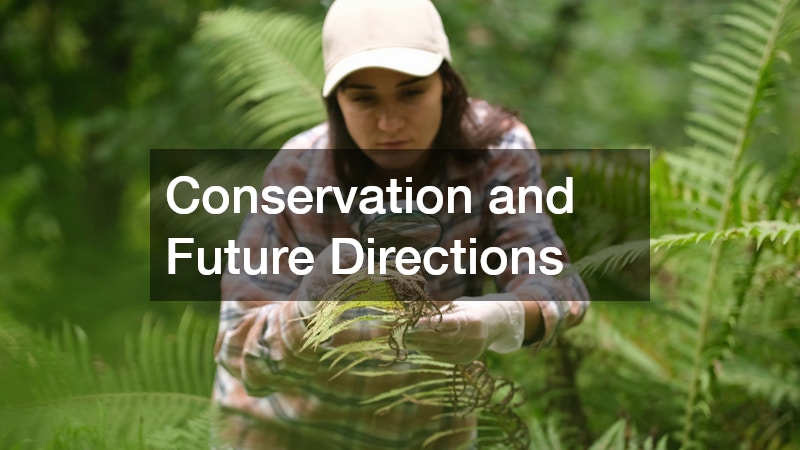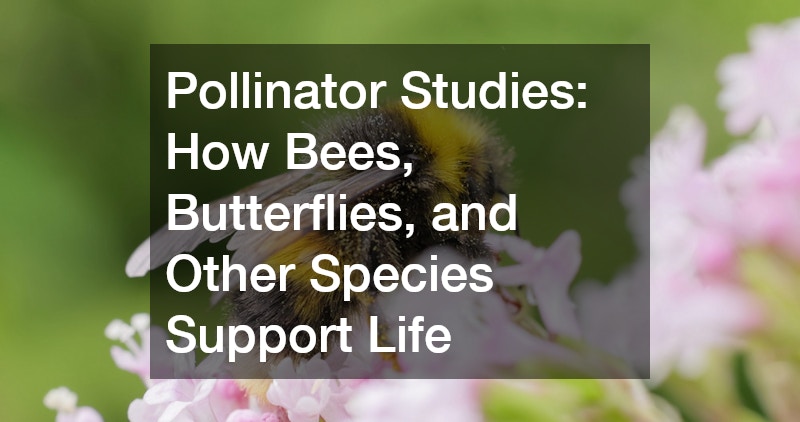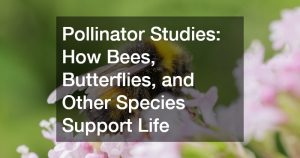Pollinators such as bees, butterflies, and various other species play a crucial role in sustaining the ecosystems on our planet. Through their interactions with plants, these creatures ensure the production of fruits, seeds, and the continuation of diverse flora. In this article, we delve into the fascinating world of pollinator studies to understand their importance and the challenges they face.
The Critical Role of Pollinators
Pollinators are integral to the survival of numerous plant species, as they facilitate the reproduction process by transporting pollen from one flower to another. This process is necessary for the fertilization and subsequent production of seeds.
Without pollinators, many plants that form the foundation of our diet—such as fruits, vegetables, and nuts—would fail to reproduce. Globally, pollinators contribute to the reproduction of 75% of the world’s flowering plants and about 35% of global food crops depend on animal pollinators. Pollinator studies highlight that these species are not merely contributors to ecological diversity but also pivotal to food security worldwide.
Bees are perhaps the most well-known pollinators, with honeybees being crucial for large-scale agricultural production. However, native bee species, often overlooked, are also significant to pollination services, especially within local ecosystems. Pollinator studies underscore the diversity of bees, illustrating that there are over 20,000 species worldwide, each playing unique roles in their environments. Bees’ decline, attributed to factors such as habitat loss, pesticides, and climate change, poses a critical risk to pollination processes. Conservation efforts guided by pollinator studies aim to mitigate these declines and promote sustainable practices.
Butterflies, too, play an essential role in pollination. They are particularly noted for their ability to pollinate plants at different times of the day compared to bees, as they are often more active in the cooler times when bees are not. The aesthetic charm of butterflies also makes them excellent ambassadors for conservation efforts, increasing public interest in pollinator studies and influencing policy changes. Moreover, their migratory patterns, such as those seen in the Monarch butterfly, offer significant data for understanding environmental changes. Hence, butterflies are indispensable for maintaining the ecological balance while enhancing our understanding of global environmental health.
Threats Facing Pollinators
Pollinator studies have emphasized the myriad threats that these vital species face in today’s rapidly changing world. Among the most pressing issues are habitat loss due to urbanization, agriculture, and deforestation. As natural landscapes are altered or destroyed, pollinators lose access to essential resources like nectar and pollen. These changes can drastically reduce the population sizes of local pollinator communities, impacting plant reproduction and biodiversity. In response, conservationists are advocating for the creation of pollinator-friendly environments that incorporate diverse plant species to support various pollinators.
Another significant threat to pollinators is the widespread use of pesticides and chemicals in agriculture. These substances can be detrimental to pollinators, affecting their health and ability to pollinate effectively. Neonicotinoids, in particular, have been highlighted as harmful to bee populations; research has shown these chemicals can impair bees’ foraging abilities and survival rates. Pollinator studies have highlighted the urgent need to regulate the use of harmful chemicals and adopt integrated pest management strategies. By doing so, we can reduce the negative impacts on pollinator populations and sustain agricultural productivity.
Climate change is an overarching threat that affects pollinators by altering habitats, shifting flowering times, and causing extreme weather conditions. Changing temperatures can disrupt the synchrony between pollinators and their plant partners, leading to mismatches that impact pollination efficiency and plant reproduction. As climate change continues to manifest, it is crucial for pollinator studies to inform adaptive strategies that help pollinators cope with new environmental pressures. This includes conservation efforts such as habitat restoration and the preservation of migration corridors. Overall, understanding these threats enables us to implement effective solutions to safeguard pollinators’ future.
Conservation and Future Directions
Efforts to conserve and protect pollinator populations are gaining momentum globally. Initiatives like the creation of pollinator habitats in agricultural and urban areas, alongside policies that encourage biodiversity, are central to these conservation strategies. Pollinator studies provide essential data that guide these efforts, helping to identify key species and ecosystem interactions that need protection. Additionally, raising public awareness of the importance of pollinators is pivotal. By engaging communities and fostering appreciation for these crucial organisms, we can build a culture of conservation that supports pollinator-friendly practices.
Technological advancements are enhancing our understanding of pollinators through innovative research methods. Genetic studies, for example, offer insights into pollinator health and resilience. Moreover, digital tracking technologies are allowing scientists to monitor pollinator behaviors and movements more accurately than ever before. These advancements provide vital data that inform conservation strategies and support adaptive management in response to environmental changes. As pollinator studies continue to evolve, they pave the way for more sustainable interactions between humans and the natural world.









